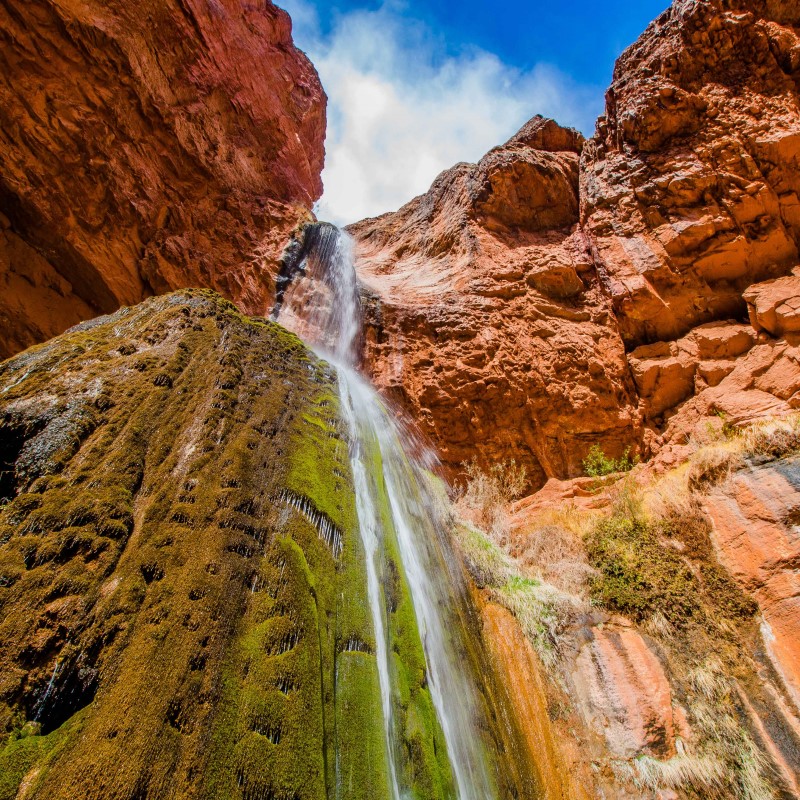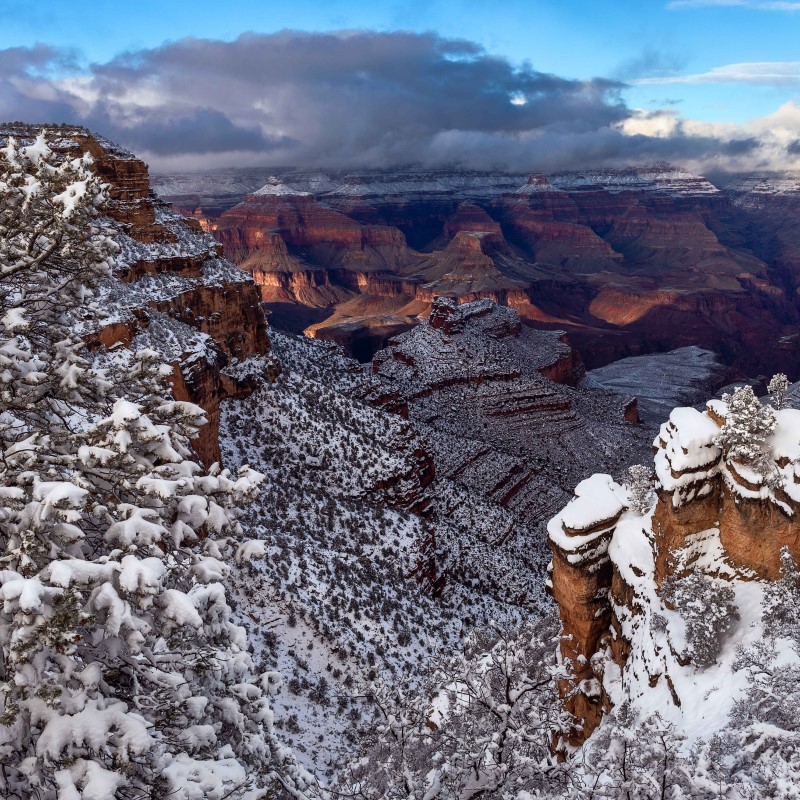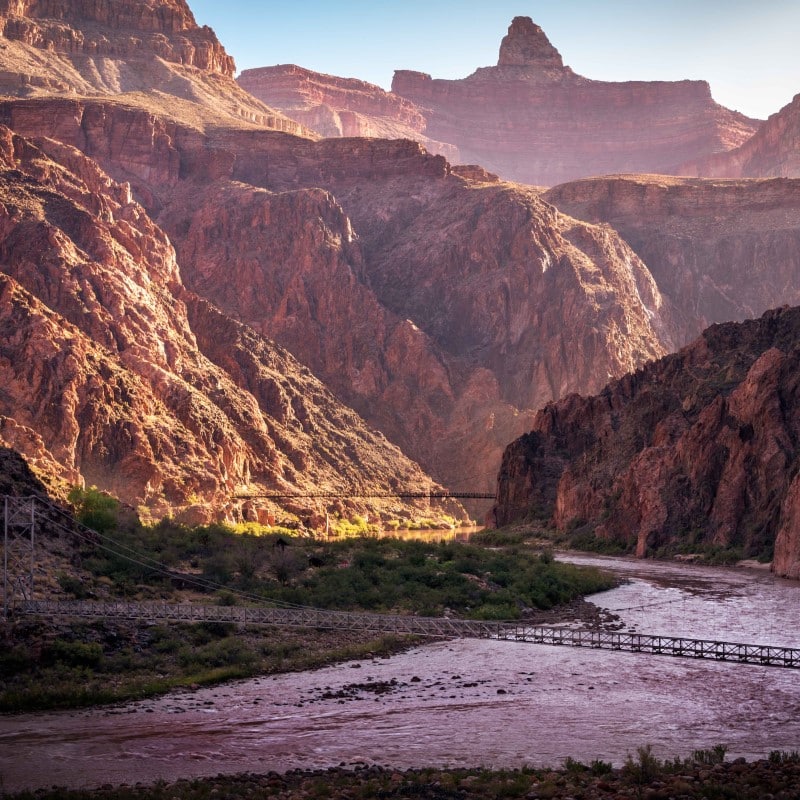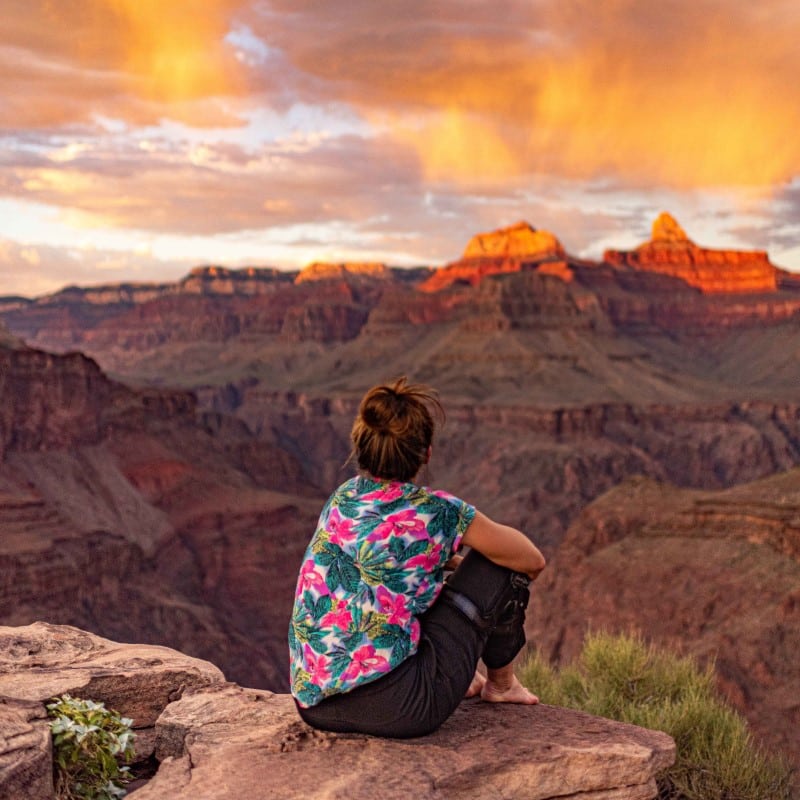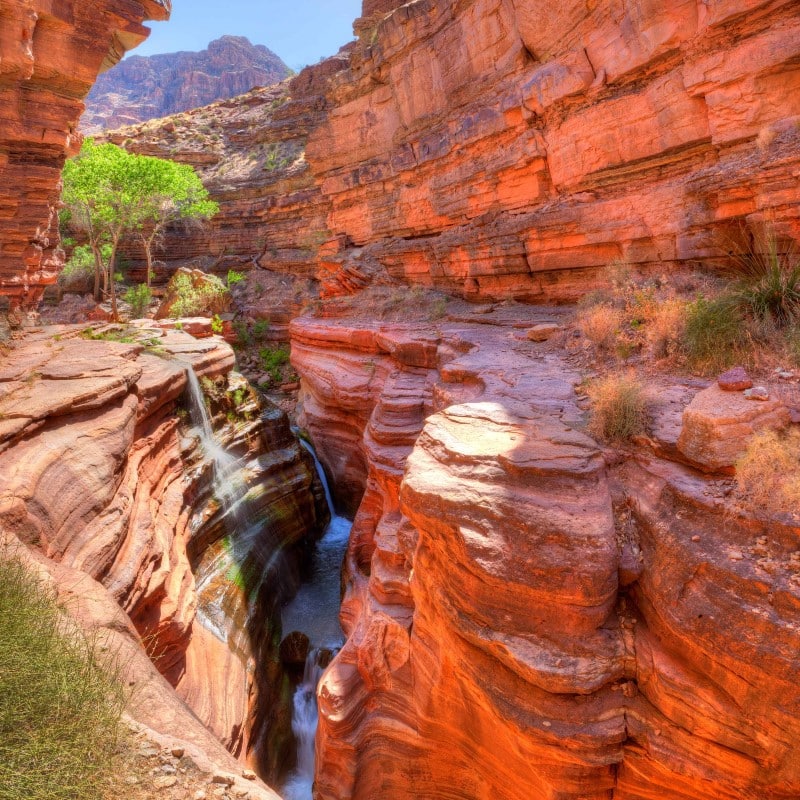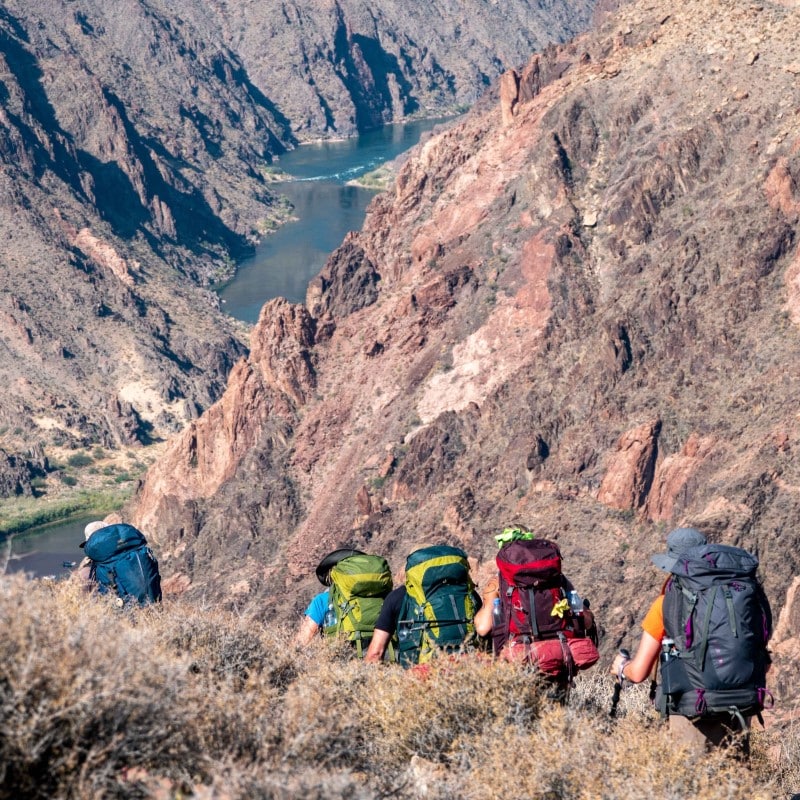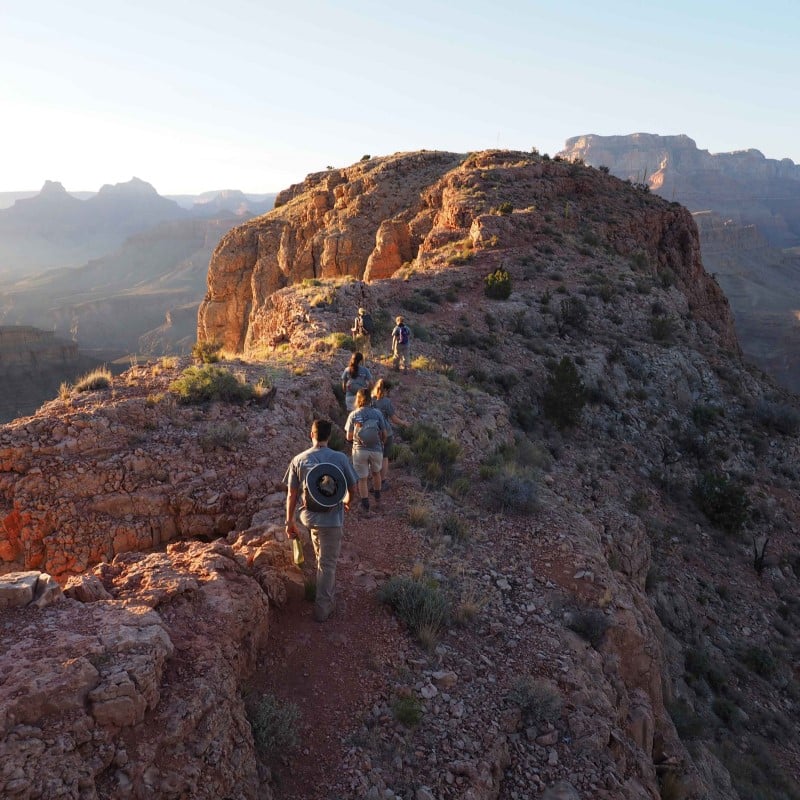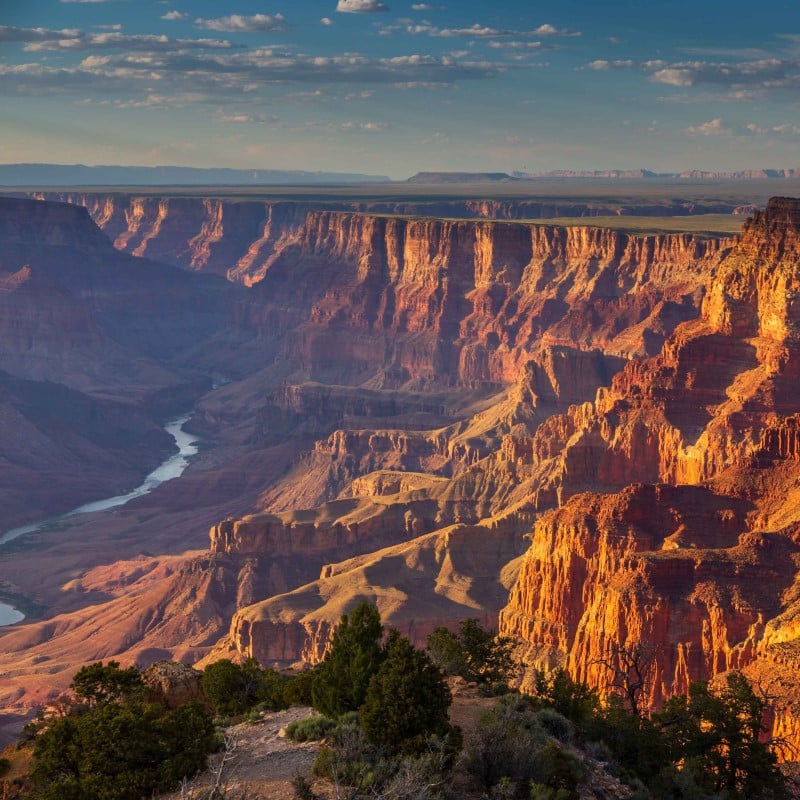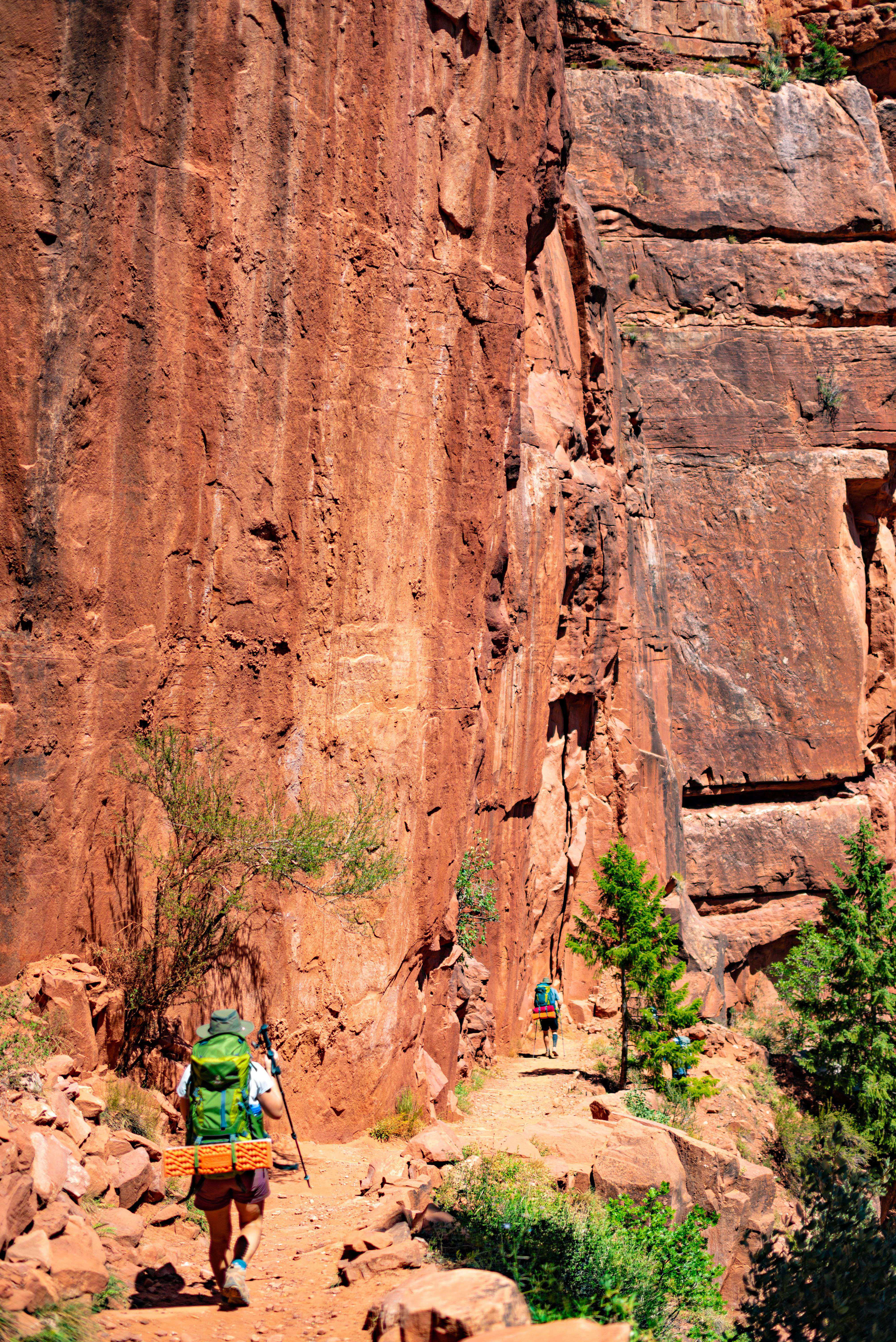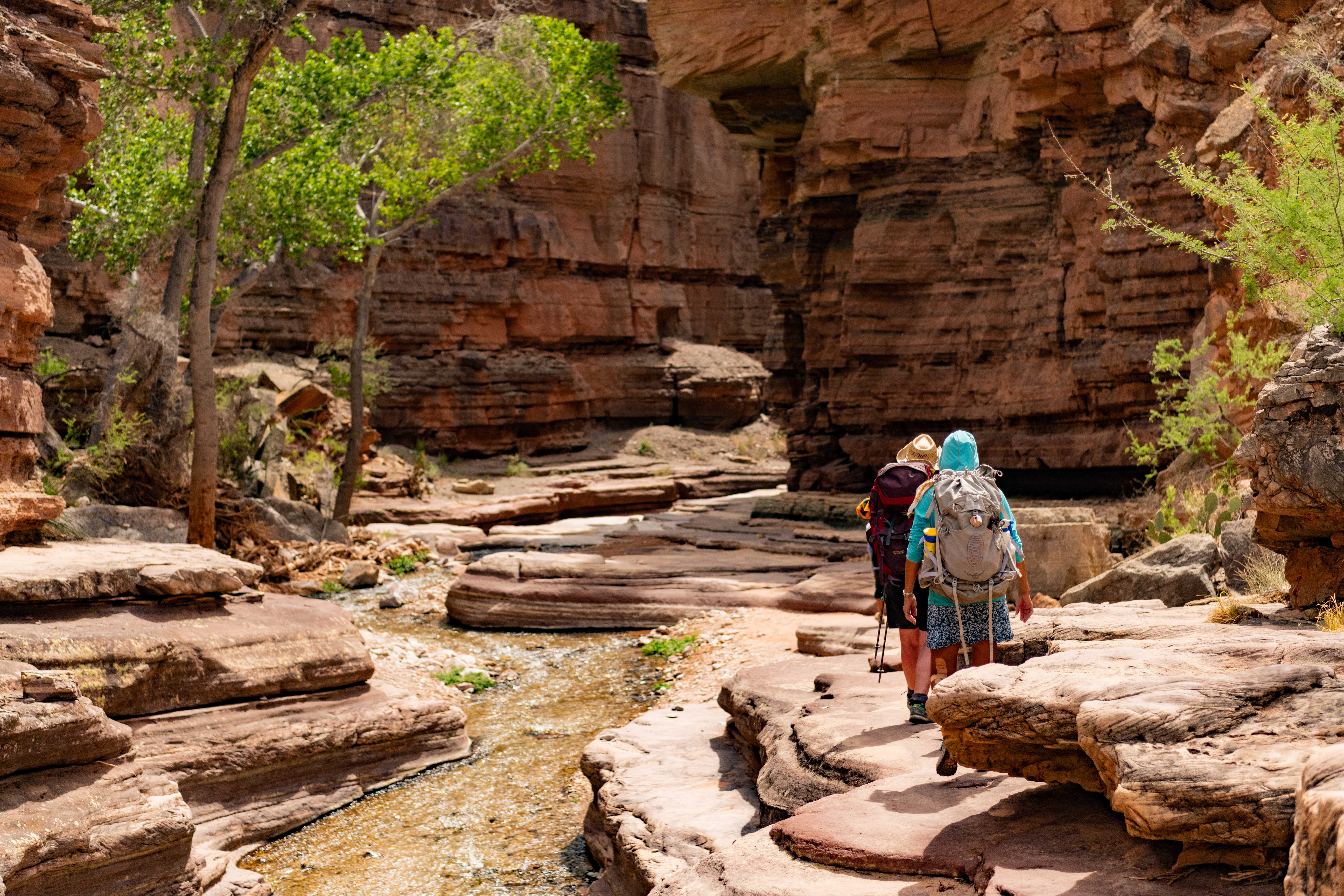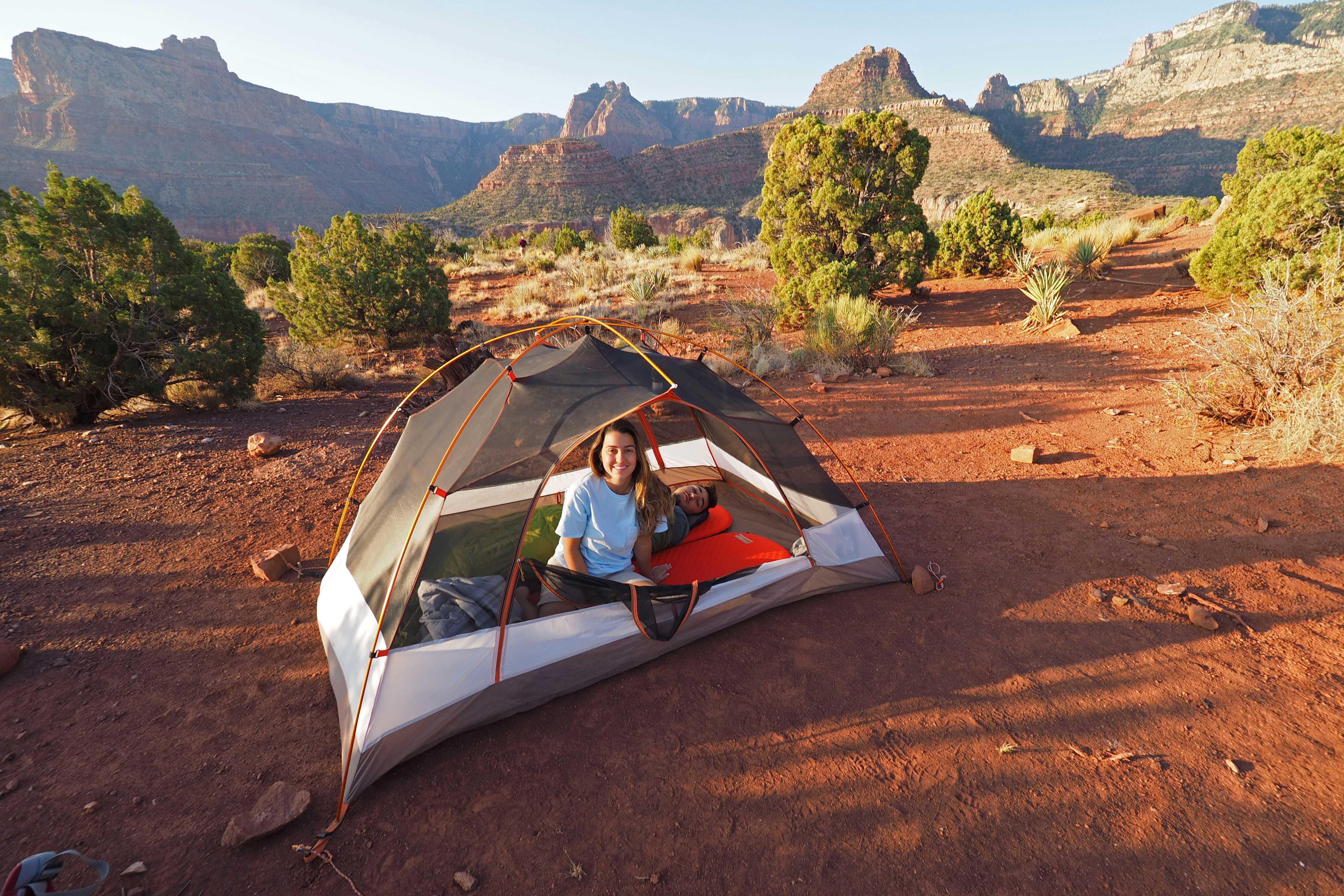What’s the most popular Grand Canyon backpacking trip?
Rim to Rim is undoubtedly the most popular Grand Canyon backpacking trip. This iconic trek involves hiking from one rim of the Grand Canyon to the other, typically from the North Rim to the South Rim or vice versa. And while it can be completed in two or three days, we offer a 4-day itinerary which allows plenty of time to really enjoy the trip and embark on a number of interesting side hikes along the way. You can spend one night in each of the Corridor Campgrounds (Cottonwood Camp, Bright Angel Camp, and Havasupai Gardens Camp).
Is Grand Canyon hiking dangerous?
Though just about any outdoor pursuit involves some element of risk and potential danger, Grand Canyon is a particularly challenging due to several factors. First of all, just about every hike in Grand Canyon starts by going downhill, which can seem pretty easy for a casual day hike. But as the views get better and better and the lure of what might be around the next corner pulls you farther and farther below the rim, the ill-prepared hiker can soon find themselves in too deep (literally and figuratively). As soon as you turn around and start going back uphill, you realize how demanding the never-ending ascent can be. For some people, it will take at least twice as long to hike out than it did to hike down.
On the other hand, those planning a hike all the way to the bottom of Grand Canyon are often completely surprised at how challenging the non-stop downhill hiking can prove. While many hikers get nervous about the hike out, it’s often the hike down that proves overwhelming. The seemingly unending descent is punishing on knees and can rapidly fatigue leg muscles.
Finally, the climate and environmental challenges of Grand Canyon can be incredibly challenging. A summer morning on the South Rim can present cool temperatures seemingly perfect for hiking. Unwitting hikers start trotting down the South Kaibab Trail and before they know it, they’re 4 miles down the trail, the temperatures are pushing 90 degrees Fahrenheit at 10:00am and there’s no shade and no water anywhere. The hiker starts heading back uphill and quickly finds that the sun exposure, heat, and strenuous hiking combine to overwhelm them completely. They rapidly run out of drinking water and discover they didn’t bring nearly enough food keep them energized. Every year, at least a few hikers become so overwhelmed that they require an emergency rescue and some never make it back out.
In short, Grand Canyon is a land of extremes. Whether it’s the heat, the brutal cold of winter, or the challenging hiking terrain, ill-prepared hikers can easily become overwhelmed and find themselves in a dangerous situation. On the other hand, those who do their homework, plan accordingly, and physically prepare can have a perfectly safe and extremely rewarding experience while hiking Grand Canyon.


